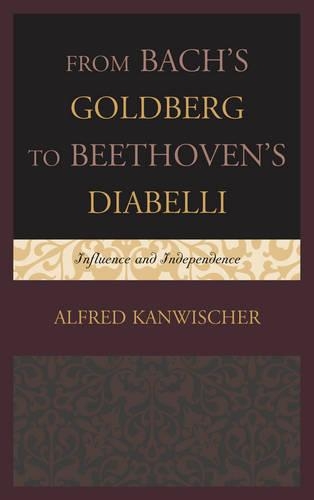
From Bach's Goldberg to Beethoven's Diabelli: Influence and Independence
(Hardback)
Publishing Details
From Bach's Goldberg to Beethoven's Diabelli: Influence and Independence
By (Author) Alfred Kanwischer
Bloomsbury Publishing PLC
Rowman & Littlefield Publishers
15th May 2014
United States
Classifications
Tertiary Education
Non Fiction
Keyboard instruments
Composers and songwriters
786.2092
Physical Properties
Hardback
238
Width 161mm, Height 235mm, Spine 23mm
499g
Description
In From Bachs Goldberg to Beethovens Diabelli: Influence and Independence, music scholar and noted pianist Alfred Kanwischer takes readers on an extended exploration in which each of the thirty-three pieces making up Beethovens Diabelli Variations (Op. 120) is caringly examined and assessed for its ingredients, actions, personality, and influence on the whole. Counterpoint abounds, not only in the fugal variations, which are closely parsed, but throughout the Diabelli, revealing the noticeably baroque character of the technical compositional devices Beethoven employs. Throughout his study, Kanwischer integrates comparisons with Bachs immortal Goldberg Variations. Both sets stand alone as among the greatest keyboard variations in the Western canon. During their creation, the composers were nearly the same age, at the zenith of their art, and in similarly felicitous frames of mind. Kanwischer underscores twenty essential similarities, from the use of melody and melodic outline and the comparability among variations in size, parallel design, ebullient outlook, increasing contrasts, daring virtuosic flights, Shakespearean blend of comic and tragic, and their respective cumulative rises to spiritual transcendence. From Bachs Goldberg to Beethovens Diabelli takes readers on a lively and stimulating journey of discovery. It considers not only questions of influence but those of insight and understanding, offering a work useful as a reference and as a guide to performers, music instructors, and devotees. This work also includes seventy visually annotated interpretive musical examples as aids to understanding.
Reviews
Alfred Kanwischers monumental study of these two great variation sets is especially valuable because it comes from a gifted performer and wide-ranging historian who has devoted decades to the intricate details of their construction and meaning. Musicologists often lament the fact that the great performers hesitate to record in words what they have learned from their intense study of works for public performance. Here is a study that documents exactly the kind of in-depth analysis we seek, and one richly interspersed with aphoristic quotes, references to useful secondary literature, and the authors own keen insights. There is nothing quite like this study. -- William Meredith, Director, The Ira F. Brilliant Center for Beethoven Studies, San Jose State University
Author Bio
Alfred Kanwischer is a noted pianist and scholar. A pupil of Egon Petri and Bela Nagy, he received his DMA from Boston University and has performed for 35 years on three continents as soloist, and duo-pianist with his wife, under Albert Kay Concert Artists Management, New York. He has held faculty positions at Boston University, Tanglewood Institute, Peabody College, and San Jos State University, where he is currently professor emeritus. His articles have appeared in the Beethoven Journal, The American Music Teacher, and other music journals.
